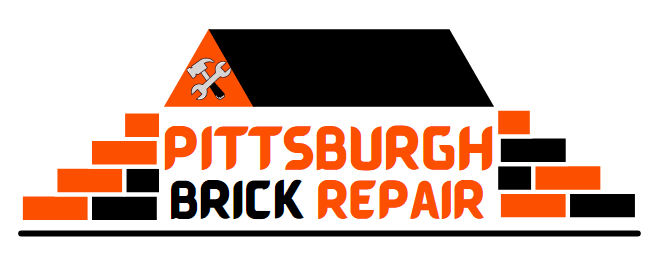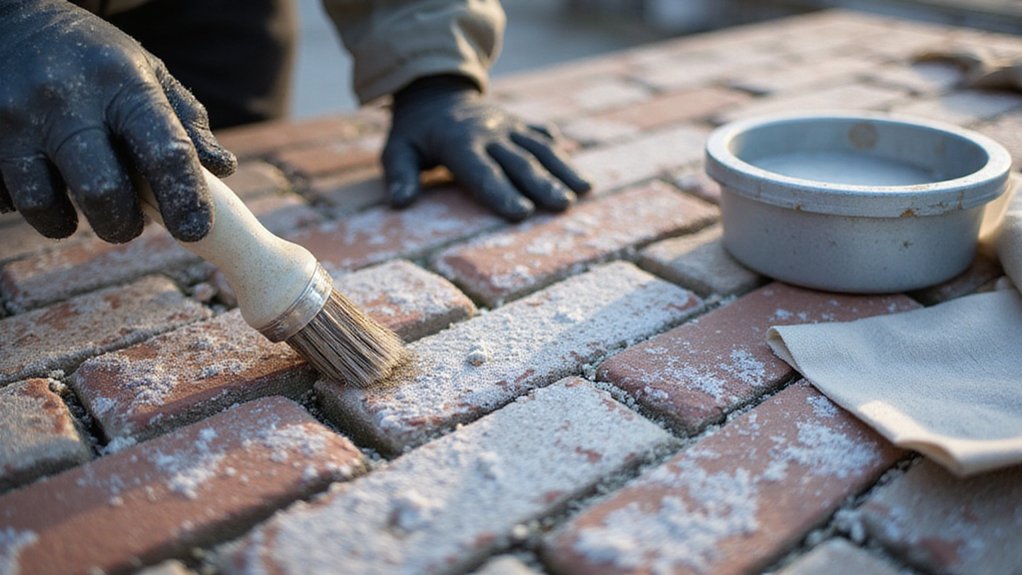Winter can wreak havoc on your home’s brickwork, silently undermining its structural integrity with each freezing cycle. As temperatures drop, moisture trapped in brick pores expands, creating microscopic cracks that threaten your masonry’s long-term durability. If left unchecked, these seemingly minor damages can lead to significant and costly repairs. Curious about how you can shield your brickwork from winter’s destructive potential? Let’s investigate the essential strategies that will keep your masonry strong and resilient.
Understanding Brick Vulnerability in Winter
Three key factors make brick particularly vulnerable during winter months. Your brick’s porosity allows moisture absorption, which can lead to serious structural damage when temperatures drop. Freezing water expands within brick pores, causing tiny cracks that progressively weaken the masonry. These microscopic fractures develop silently, potentially compromising your home’s exterior over time.
Water trapped inside bricks alters, creating pressure that gradually breaks down the material’s integrity. Understanding these vulnerabilities helps you proactively protect your home, preventing costly repairs and maintaining your property’s aesthetic and structural value. Tuckpointing services can strategically repair mortar joints before winter, preventing moisture infiltration and potential freeze-thaw damage to your masonry structure.
Water Penetration and Freeze-Thaw Damage
Given the brick’s susceptibility to moisture damage, water penetration becomes the primary catalyst for winter-related masonry destruction. When water seeps into your brickwork, it creates a dangerous scenario where condensation effects and thermal expansion cycles can rapidly deteriorate your structure.
As temperatures fluctuate, trapped moisture expands and contracts, creating microscopic cracks that compromise your brick’s integrity. These tiny fissures allow more water to enter, accelerating damage with each freeze-thaw cycle. Understanding this process helps you recognize the importance of proactive moisture protection and timely maintenance for your masonry.
Tuckpointing services can help prevent water entry and minimize potential winter damage by professionally refilling joints between bricks and addressing early signs of mortar deterioration.
Essential Waterproofing Techniques
Several critical waterproofing techniques can protect your masonry from winter’s destructive moisture cycles. You’ll want to focus on exterior sealant application and brick face waterproofing to shield your walls from potential damage.
By carefully selecting high-quality penetrating sealers, you can create an invisible barrier that repels water while allowing your bricks to breathe. Professional-grade products will help prevent water absorption, reducing the risk of cracking and deterioration during freezing temperatures.
Don’t underestimate the importance of proper application – thorough coverage and consistent maintenance are key to long-lasting protection.
Sealing and Caulking Critical Joints
Winter’s harsh conditions can wreak havoc on masonry structures, making proper sealing and caulking of critical joints a crucial preventive measure. You’ll want to focus on areas where moisture can penetrate, like window frames, expansion joints, and wall intersections.
Choose high-quality curing compounds designed for cold weather application, which can withstand low temperatures and provide sturdy protection. When applying caulk, guarantee surfaces are clean and dry, and use a professional-grade sealant that can flex with temperature changes.
Don’t rush the process—meticulous application now can save you costly repairs later.
Repairing Existing Masonry Cracks
After carefully sealing those vulnerable joints, you’ll want to address any existing damage in your masonry walls. Cracks can worsen during winter, so identifying and repairing them now is essential. You’ll need to assess whether the damage requires mortar repointing or brick reattachment.
Small hairline cracks might need simple sealant, while larger structural issues demand professional intervention. Clean the crack thoroughly, removing loose debris and old materials. Choose a weather-appropriate repair method that’ll prevent further deterioration.
Drainage and Moisture Management
Because moisture can wreak havoc on masonry structures, proper drainage and management become critical during winter months. You’ll want to start by examining your soil grading, ensuring water flows away from your foundation instead of pooling near brick walls.
Regular gutter inspections can prevent water from cascading directly onto masonry surfaces, which might cause significant damage during freezing temperatures. Check that downspouts direct water at least three feet from your home’s foundation, creating a protective barrier against potential moisture infiltration and freeze-thaw cycle destruction.
Professional Inspection and Maintenance
When should you prioritize a professional masonry inspection before winter sets in? Early fall is your best window for thorough condition assessments.
Skilled professionals can identify potential vulnerabilities in your brickwork that might worsen during freezing temperatures. They’ll check mortar integrity, detect hidden cracks, and recommend targeted repairs before severe weather hits.
Regular maintenance schedules aren’t just recommended—they’re vital for protecting your home’s structural health. By investing in a professional inspection now, you’ll save money on costly repairs later and guarantee your masonry remains strong and resilient through harsh winter conditions.
Seasonal Care and Ongoing Brick Protection
Though winter’s harsh conditions can wreak havoc on masonry, strategic seasonal care helps homeowners protect their brick structures from potential damage. Regular brick face cleaning prevents moisture buildup and reduces the risk of freeze-thaw cycles that can crack your walls.
You’ll want to seal existing gaps, inspect mortar joints, and apply a water-resistant coating before temperatures drop. By taking proactive steps, you’re not just maintaining your home—you’re preserving its structural integrity and aesthetic appeal. Your diligence now can save significant repair costs later.
Frequently Asked Questions
Can I Apply Masonry Waterproofing During Active Winter Weather?
You’ll struggle applying waterproofing during cold weather conditions. Surface temperatures must be above 40°F, and moisture-free, for proper sealant adhesion and effective protection of your masonry.
How Expensive Are Professional Brick Protection and Maintenance Services?
Professional brick protection services typically range from $500-$2,500, depending on your home’s size. You’ll find extensive service packages with cost estimates customized to your specific masonry maintenance needs.
Will DIY Brick Repairs Compromise My Home’s Structural Integrity?
If you’re not experienced, DIY brick repairs can risk compromising your home’s structural integrity. Proper DIY brick repointing techniques require skill, and incorrect application might cause more damage than repair.
What Immediate Signs Indicate Serious Winter Brick Damage?
You’ll spot serious brick damage through visible efflorescence (white salt deposits) and spalling bricks that crumble or chip. These warning signs mean immediate professional inspection is indispensable to prevent further structural compromise.
How Long Does Typical Masonry Waterproofing Protection Last?
You’ll want routine inspections every 3-5 years for your masonry waterproofing. With scheduled maintenance, your protective sealant can last up to a decade, ensuring your home stays secure and looking pristine.

